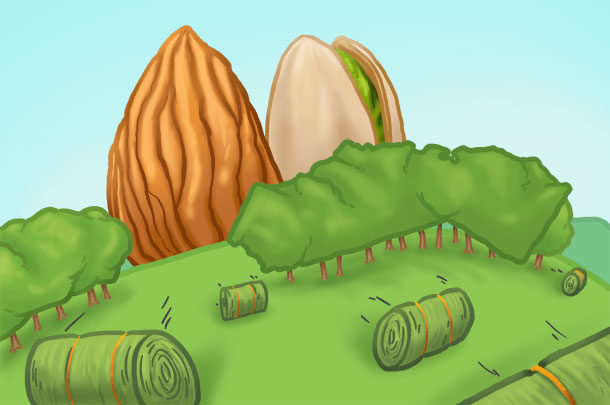In 2011, Texas had a drought and hay prices jumped up. In 2015, California had another drought and hay prices fell. In his presentation at the Western Alfalfa and Forage Symposium, Seth Hoyt, author of The Hoyt Report, explained this conundrum and gave attendees some insight on what 2016 prices might look like.
“If you look at California in the West in 2015, California had the worst drought on record,” Hoyt said. “The drought had moved up into Oregon and Washington and other states around California. Even Nevada had very dry conditions. So the question has to be asked: Why wasn’t the situation in 2015 similar to what happened to Texas in 2011? Also, when you look at the fact that the surface water allocations was at 0 percent for the second consecutive year – some of that was offset by groundwater – but the bottom line is the markets went down.”
Hoyt continued, “The reason why that happened is you have to go back to 2014, to the milk price of January to September not only in California, but in other states as well like Idaho, which has a major dairy industry. What happened is when the dairies were making money, when milk was bringing $21 to $23 per hundred, dairies bought more hay in 2014 than we realized, and not only in California but in other areas of the West. So we came into 2015 with more hay. The Western states were 74 percent up on their hay inventories versus the entire U.S., which was up 28 percent – the two major dairies states, Idaho up 181 percent and California 129 percent.”
Increased production; decreased demand
Although alfalfa hay acres were down in 2015, production was up from previous years due to increased yields. Dairies continue to feed less alfalfa hay than they have in previous years and are instead substituting a portion of the diet with other feeds, such as straw and almond hulls. In addition, dairies are averaging an additional pound of grain per head per day in the past year. The good news is, however, Hoyt does not see alfalfa hay disappearing from the dairy cow ration completely, as it is important to milk production and the cow’s overall health.
Some speculate that the drop in demand is due to decreased cow numbers in the West, but Hoyt said that isn’t the case. While cow numbers are down a little in California, the rest of the Western states are all up. Milk production is down in the West mainly because of California, which has had the biggest drop in milk production in the U.S. in the past year. Some say it’s because the farmers are feeding lower quality hay, but the producers say they are feeding the same quality they always have, leading others to speculate that the cow numbers might be down more than what the USDA reported.
International hay exports
China has been and will continue to be a major importer of alfalfa hay from the U.S. However, they will only accept non-GMO. Hoyt expects to see the United Arab Emirates (UAE) make a comeback on imports, but he does not think it will be as high as it had been in the past since they are buying hay from other countries as well.
Japan is not likely to come back on the market in a big way anytime soon. It has inventory to go through, is buying oaten hay from other countries and is trying to use more local feeds instead of imported alfalfa and Sudan hay. We also have increased competition from other countries interested in selling hay to Japan.
Looking forward
Almond acres continue to increase as alfalfa acres decrease. This trend is likely to continue, as almond prices remain strong due to a huge overseas market for them. This, Hoyt said, is a trend to watch.
Alfalfa hay prices in 2016 are hard to predict, Hoyt said, because dairies were carrying more hay in 2015 and are now carrying that hay into 2016.
“If you can’t get a handle on demand, you can’t predict where we’re going on price,” Hoyt said. “The general feeling is that the supplies of feeder hay and dry cow hay are still marketing less and that market will still be repressed. How long it will take for that market to clean out, I don’t know. Some people think it may go until next season. It will be a tough market on feeder hay. Some areas of the West still have a tremendous amount. If we have a lot of snow this winter, it would help to feed more of that to the cows and help to move some of that out.”
The problem is the market currently has an abundance of low-grade hay, so the best demand will be for the higher quality hay. However, Hoyt said it is hard to say where that market will be.
California’s hay market is the trend to watch, Hoyt said. There are 1.77 million dairy cows there. While he expects that number to go down, the number isn’t going to “fall off a cliff.” More acres are going into almond and pistachio production rather than alfalfa production. The result will be “more hay coming to California from out of state, so new growers from other states, even though it didn’t help you a bit this year, look at the hay coming from Utah or Idaho,” Hoyt said. “That’s a trend to watch because in the years ahead, I think we’re going to see more trees and a lot less alfalfa hay in California.” FG
PHOTO: California’s hay market is the trend to watch. More acres are going to almond and pistachio production rather than alfalfa production. Look for hay coming from Utah or Idaho to help feed California dairy cows. Staff photo.












